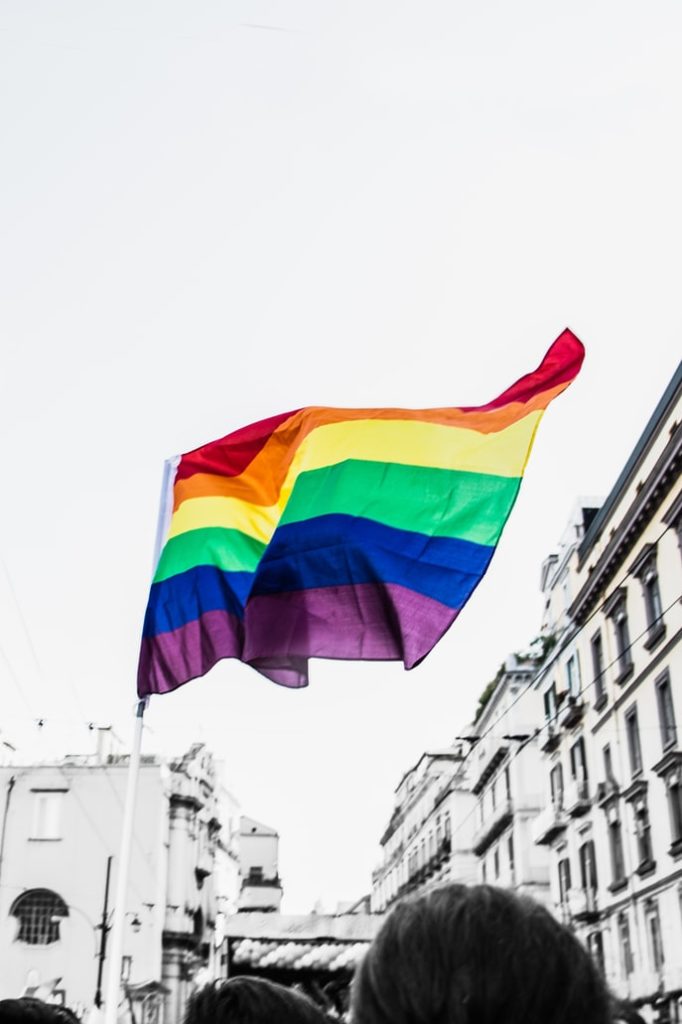Many people say that queerness is a new phenomenon. Everyone “suddenly” seems to be identifying as LGBTQ+. “When I was young we didn’t have that” is quite a common statement. We did have it, though. And generations before did, too. And centuries ago, queer people existed. In many societies people just weren’t allowed to be themselves and could even put themselves in danger if anyone found out. But in some societies, especially Native tribes and certain regions in Africa, queer people were even celebrated for a long time before colonialism brought homophobia into these communities. But queer people have always been there and they will always be here. So, let’s have a look at queerness in history and why saying it’s a new phenomenon is simply wrong.

Ancient Europe
You probably have heard of Sappho, the poet who lived around 600 BCE on the island of Lesbos and wrote many poems and odes with female-female relationships at their center. The most famous work is the “Ode to Aphrodite,” which essentially is a love letter to a young woman. In case you were wondering where the term lesbian comes from look, no further. Lesbos isn’t just a popular queer tourist destination, it’s also the namesake of one group of Queers.
Generally, ancient Greece seems to have been a place where homosexual practices did not necessarily have to be hidden. There are quite a few records on queerness during that time. Even famous philosophers such as Socrates are said to have been queer with many writings on the topic by students of Socrates, including from Plato. While it was not welcomed everywhere, certain parts of ancient Greece, including Sparta, had more prevalent homosexual behaviors, especially among military members. Alexander the Great is another famous military leader who is said to have been queer. Only after the Romans conquered Greece, and the subsequent Christianization of the region, more strict homophobic laws were introduced.
Ancient Egypt
If you have seen ancient Egyptian drawing, you might have come across some drawings that depict two men embracing or being very close to each other. While historians and archaeologists oftentimes explain these findings as “brothers embracing each other” (similar to the frequent misinterpretation of two women being very, very close friends in historic writings or paintings), it is far more likely that these drawings show lovers. Egyptians at that time had no problem will all kinds of relationships, including queer ones. A tomb of two male Egyptian royals actually shows them nose kissing with the inscription: Joined in life and joined in death, hinting at a homosexual relationship between the two.
Pre-Colonial Africa
Until colonialism came to many parts of Africa in the late 1800s and local tribes and communities were introduced to Christian ideas that condemn homosexuality, same-sex relationships were common and not stigmatized at all. Research has shown that many societies had no problem with homosexual behavior and even had a vast array of words and descriptors for it. The earliest depictions of homosexuality can actually be found in ancient paintings from 8,000 BCE in Zimbabwe. It was seen as something natural. In some countries, including Lesotho, lesbian relationships were celebrated and treated equally to heterosexual relationships. Examples include Nzinga, a female warrior in the Ndongo kingdom who had a harem of male “wives,” dressed like a man and ruled as a king; in what is now Angola, where men in the 17th century dressed like women and married men in honored ceremonies; Gabon and Cameroon, where gay sexual relations were believed to transmit wealth; or Zande warriors in Congo and Sudan, who were in gay relationships with younger men until they became warriors themselves. There are also many sources that prove queer relationships between women, such as within the Igbo communities in Nigeria, groups in Sudan and Tanzania or within some Bantu tribes. The list goes on and on. Colonialism and missionaries brought homophobia to the continent, homosexuality was never a new phenomenon or an anti-African phenomenon.
Indigenous America
Two-spirit is a term used within some indigenous communities in America to describe people outside the gender binaries. Throughout history those gender fluid and non-binary individuals oftentimes were highly respected and held many important roles within their communities. While the term “two-spirit” was only introduced in 1990 as an umbrella term for Indigenous people who live outside the gender-binary or who would identify as LGBTQ+ in some form, there have been a variety of different names in many tribes throughout history. This shows that while some communities might not have been accepting of these people while others were, they were all nonetheless aware of the concept of queerness. Having specific terms for it also proves that it could not have been a stand-alone occurrence, but rather a wider known fact that was talked about and recognized.
There have been other counts of queer behavior throughout history in different parts of the world as well, among them parts of India, China and the Maori in New Zealand. Clearly, queerness is nothing new and whether it was acknowledged and respected or criminalized and frowned upon, it always existed and there were always people living their truth and fighting for their right to exist.
Get more like this—Sign up for our daily inspirational newsletter for exclusive content!
__
Photo: Unsplash




